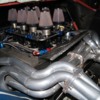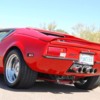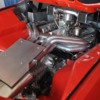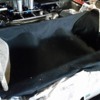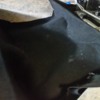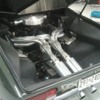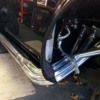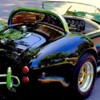My car came with an older set of Hall 180 degree headers,
The one with the spacer block between the banks at the rear
Of the engine.
My question is should that block be open to all 4 header tubes? Or
Have 4 holes to keep the tubes separate?
The original owner could not find the spacer plate so he had one made
That is just open in the middle.
And lastly do the glass packs require a support at the rear of
The trans? They just hang there and if you grab hold you can
Move them without to much difficulty.
Hall said they haven't made those headers in aprox 10
Years and didn't know if the block should be open and
That they didn't think the mufflers required any support.
But I though I'd ask.
Thanks Joe.
Original Post




